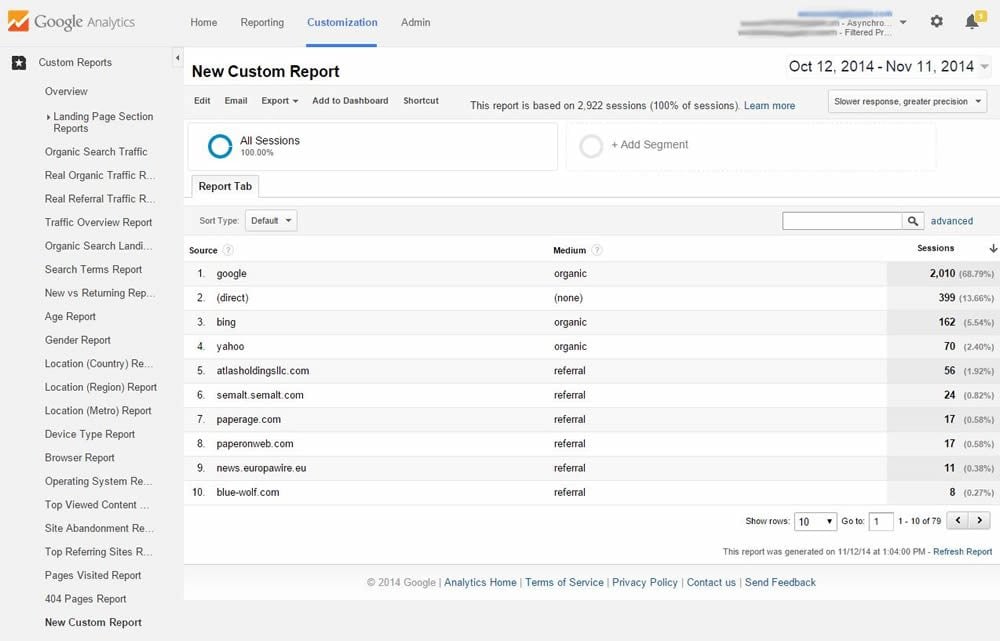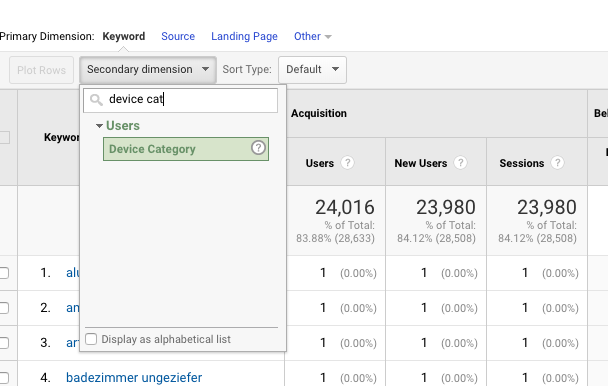Transform Your Analytics Strategy With Second Dimension in Google Analytics
By incorporating second measurements right into data analysis, a new layer of insights arises, losing light on intricate customer behaviors and communications. The critical application of additional dimensions holds the essential to unlocking a treasure chest of important information that can reinvent exactly how organizations act and translate upon their data.
Comprehending Additional Dimensions in Google Analytics
Second measurements in Google Analytics give added context to primary information by enabling users to assess metrics throughout a second measurement, supplying deeper understandings right into customer habits and interactions on a site. Secondary Dimension in Google Analytics. While main measurements give fundamental data factors such as pageviews, bounce rate, and session period, second measurements use an even more in-depth view by segmenting the key information additionally. This division enables users to assess metrics in combination with one more dimension, such as website traffic sources, demographics, or individual actions
Benefits of Using Additional Measurements
Utilizing secondary measurements in Google Analytics uses a strategic advantage by improving the deepness of evaluation and supplying a much more comprehensive understanding of individual communications and behavior on an internet site. By incorporating second dimensions, analysts can obtain useful understandings into the performance of particular sections or variables within their information. This makes it possible for a more thorough assessment of customer behavior beyond surface-level metrics, allowing for a deeper expedition of the elements influencing individual involvement and conversions.

How to Implement Second Dimensions
When incorporating secondary dimensions in Google Analytics, one important step is to select the pertinent metrics and dimensions to enhance the evaluation process. To carry out second measurements properly, start by accessing your Google Analytics account and navigating to the report you intend to boost with added information. Once in the record, find the "Secondary Measurement" switch, usually found above the information table. Clicking this button will open a drop-down menu listing various dimensions that can be included to your primary measurement for deeper understandings.
After selecting the proper secondary dimension, such as 'Source/Medium' or 'Device Classification,' Google Analytics will show the data in a more detailed style, allowing you to cross-analyze different facets of individual behavior. Remember to trying out various combinations of primary and second measurements to discover beneficial patterns and patterns that can educate your marketing techniques. By executing secondary measurements thoughtfully, you can get a more comprehensive understanding of your web site or app efficiency and make data-driven choices to enhance your digital visibility.
Studying Data With Second Dimensions
Enhance your data evaluation in Google Analytics by incorporating second dimensions to delve deeper right into individual actions patterns and enhance your electronic advertising and marketing techniques properly - Secondary Dimension in Google Analytics. By adding secondary dimensions to your primary information, you can acquire important insights that can assist you make educated choices about your internet site or app efficiency
Evaluating information with secondary measurements enables you to sector your main data even more, supplying a more thorough sight of individual communications. Integrating the key measurement of 'source/medium' with a secondary dimension like 'landing page' can reveal which particular pages are driving web traffic from different resources. This details can be crucial in fine-tuning your material approach or optimizing your marketing campaign to enhance conversions.
Additionally, utilizing second measurements helpful hints enables you to recognize correlations in between different metrics, helping you understand the influence of different factors on individual habits. Whether it's evaluating demographics alongside user involvement metrics or device categories with conversion rates, secondary measurements empower you to reveal concealed trends and patterns that can lead your advertising initiatives.
Enhancing Efficiency With Secondary Measurements
To enhance the effectiveness of information analysis and decision-making in Google Analytics, incorporating second dimensions is essential to maximizing performance metrics and obtaining More Bonuses much deeper insights into customer actions patterns. By using secondary dimensions, experts can dive beyond surface-level data and uncover valuable correlations that may otherwise go unnoticed. This optimization strategy makes it possible for services to customize their advertising efforts better, identify locations for renovation in website usability, and improve general user experience.
Secondary dimensions use an even more thorough sight of customer communications by offering additional context to main information metrics. For example, combining the key measurement of 'landing web page' with a secondary measurement like 'tool classification' can expose whether certain devices are more probable to drive interaction on certain landing pages. This understanding can notify receptive layout renovations or targeted advertising and marketing methods to increase efficiency.

Verdict
To conclude, the combination of additional measurements in Google Analytics gives services with a powerful tool to enhance their analytics method. Secondary Dimension in Google Analytics. By diving deeper into customer actions and interactions, online marketers can reveal important insights that can drive performance optimization and enhance the total individual experience. Leveraging secondary measurements permits a much more extensive evaluation of information, causing even more educated decision-making and tailored advertising initiatives
Secondary dimensions in Google Analytics offer added context have a peek at this website to primary information by permitting customers to examine metrics throughout a second dimension, providing much deeper insights into individual habits and interactions on a site. While primary measurements provide basic data points such as pageviews, bounce rate, and session period, additional dimensions provide an even more thorough sight by segmenting the main data further.One of the crucial advantages of making use of secondary measurements is the capacity to uncover relationships and patterns that may not be quickly noticeable when assessing data with primary dimensions alone.When integrating second measurements in Google Analytics, one crucial step is to select the pertinent metrics and measurements to enhance the analysis process. Pairing the primary dimension of 'landing page' with a second measurement like 'gadget group' can disclose whether certain devices are a lot more most likely to drive interaction on specific landing web pages.